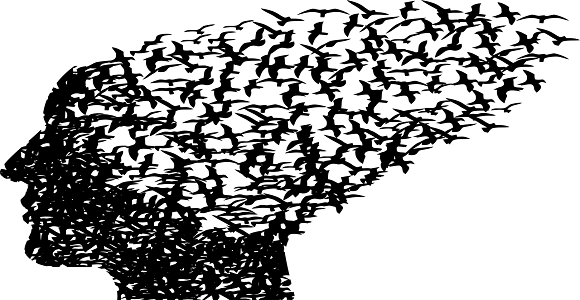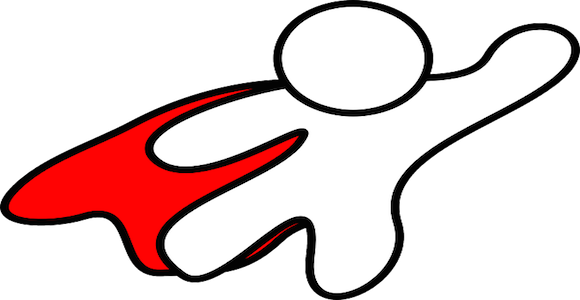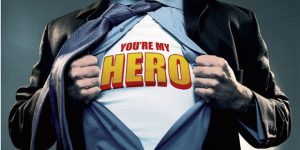
Groucho Marx once said, “You’re headed for a nervous breakdown. Why don’t you pull yourself to pieces?” That, in fact, is what we’re going to do to our hero.
Now many writers focus on a Hero and a Villain as the primary characters in any story. And there’s nothing wrong with that. But as we are about to discover, there are so many other options for creative character construction.
Take the average hero. What qualities might we expect to find in the fellow? For one thing, the traditional hero is always the Protagonist. By that we mean he or she is the Prime Mover in the effort to achieve the story goal. This doesn’t presuppose the hero is a willing leader of that effort. For all we know he might accept that charge kicking and screaming. Nonetheless, once stuck in the situation, the hero drives the push to achieve the goal.
Another quality of a stereotypical hero is that he is also the Main Character. By this we mean that the hero is constructed so that the audience stands in his shoes. In other words, the audience identifies with the hero and sees the story as centering around him.
A third quality of the most usual hero configuration is being a “Good Guy.” Simply, he intends to do the right thing. Of course, he might be misguided or inept, but he wants to do good, and he does try.
And finally, let us note that heroes are usually the Central Character, meaning that he gets more “media real estate” (pages, screen time, lines of dialog) than any other character.
Listing these four qualities we get:
1. Protagonist.
2. Main Character.
3. Good Guy.
4. Central Character
Getting right to the point, the first two items in the list are structural in nature, while the last two are storytelling. Protagonist describes the character’s function from the Objective View described earlier. Main Character positions the audience in that particular character’s spot through the Main Character View. In contrast, being a Good Guy is a matter of personality, and Central Character is determined by the attention given to that character by the author’s storytelling.
You’ve probably noticed that we’ve used common terms such as Protagonist, Main Character, and Central Character in very specific ways. In actual practice, most authors bandy these terms about more or less interchangeably. There’s nothing wrong with that, but for structural purposes it’s not very precise. That’s why you’ll see Dramatica being something of a stickler in its use of terms and their definitions: it’s the only way to be clear.
At this juncture, you may be wondering why we even bother breaking down a hero into these pieces. What’s the value in it? The answer is that these pieces don’t necessarily have to go together in this stereotypical way.
For example, in the classic story of racial prejudice, To Kill a Mockingbird, the Protagonist function and the Main Character View are separated into two different characters.
The Protagonist is Atticus, played by Gregory Peck in the movie version. Atticus is a principled Southern lawyer in the 1930s who is assigned to defend a black man wrongly accused of raping a white girl. His goal is to ensure justice is done, and he is the Prime Mover in this endeavor.
But we do not stand in Atticus’ shoes, however. Rather, the story is told through the eyes of Scout, his your daughter, who observers the workings of prejudice from a child’s innocence.
Why not make Atticus a typical hero who is also the Main Character? First, Atticus sticks by his principles regardless of the dangers and pressures brought to bear. If he had represented the audience position, the audience/reader would have felt quite self-righteous throughout the story’s journey.
But there is even more advantage to splitting these qualities between two characters. The audience identifies with Scout. And we share her fear of the local boogey man known as Boo Radley – a monstrous mockery of human form who forms the stuff of local terror stories. All the kids know about Boo, and though we never see him, we hear their tales of his horrible ways.
At the end of the story, it turns out that Boo is just a gentle giant, a normal man with a kind heart but low intellect. As was the custom in that age, his parents kept him indoors, inside the basement of the house, leaving him pale and scary-looking due to the lack of sunlight. But Boo ventures out at night, leading to the false but horrible stories about him when he is occasionally sighted.
As it happens, Scout’s life is threatened by the father of the girl who was ostensibly raped in an attempt to get back at Atticus. Lo and behold, it is Boo who comes to her rescue. In fact, he has always been working behind the scenes to protect the children and is not at all the horrible monster they all presupposed.
In a moment of revelation, we, the audience, come to realize we have been cleverly manipulated by the author to share Scout’s initial prejudice against Boo. Rather than feeling self-righteous by identifying with Atticus, we have been led to realize that we are just as capable of prejudice as the obviously misguided adults we have been observing.
The message of the story is that prejudice does not have to come from meanness, but will happen within the heart of anyone who passes judgment based on hearsay rather than direct knowledge. This statement could never have been successfully made if the elements of the typical hero had all been placed in Atticus.
So, the message of our little essay here is that while there is nothing wrong with writing about heroes and villains, it is limiting. By separating the components of the hero into individual qualities, we open our options to a far greater number of dramatic scenarios that are far less stereotypical.



 Every author has a hero – that one special character their story revolves around. But who is this guy (or gal, or thing or ?) Why he’s your main character, that’s who. And he’s also your protagonist. And he’s your central character. And he’s a good guy (unless he’s an anti-hero, in which case he might be a bad guy, a troubled guy in a story of redemption or, as Jessica Rabbit said in Who Framed Roger Rabbit, “I’m not bad, I’m just drawn that way.”
Every author has a hero – that one special character their story revolves around. But who is this guy (or gal, or thing or ?) Why he’s your main character, that’s who. And he’s also your protagonist. And he’s your central character. And he’s a good guy (unless he’s an anti-hero, in which case he might be a bad guy, a troubled guy in a story of redemption or, as Jessica Rabbit said in Who Framed Roger Rabbit, “I’m not bad, I’m just drawn that way.”
